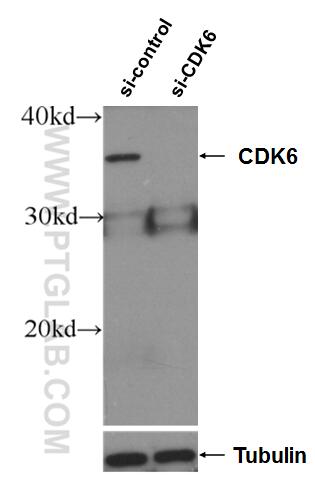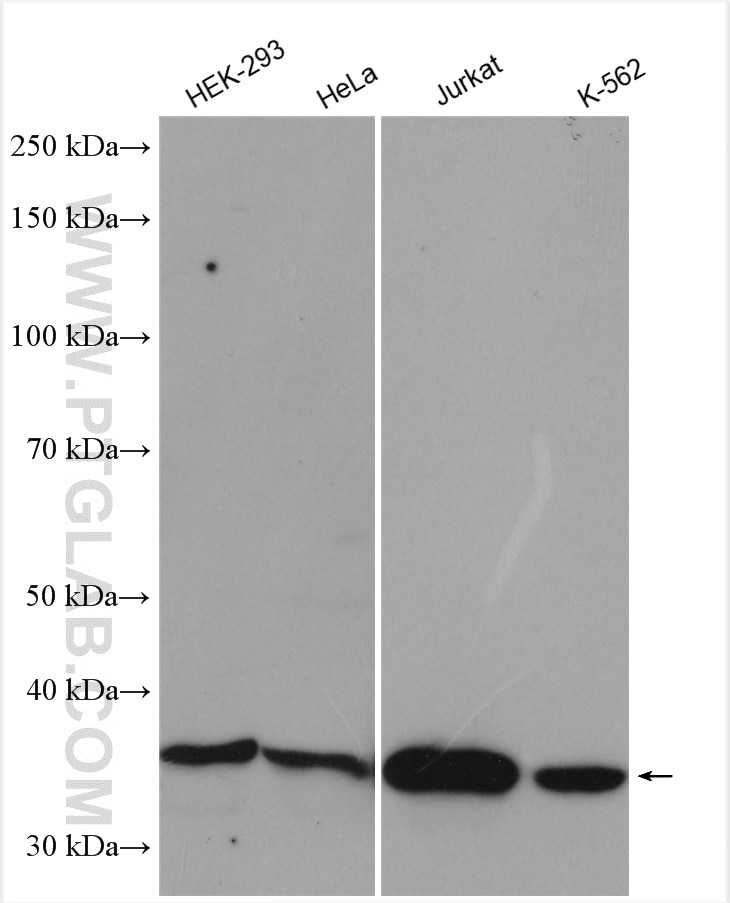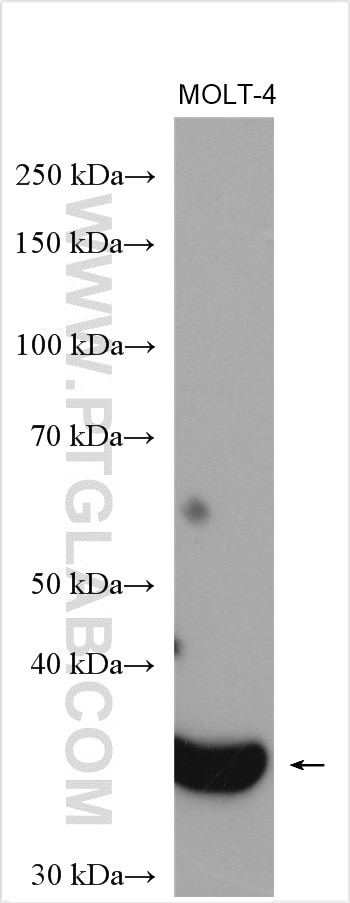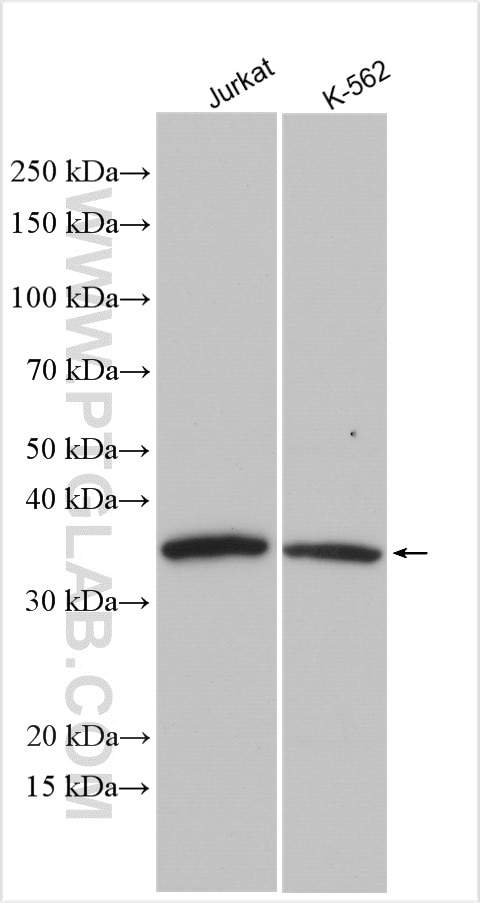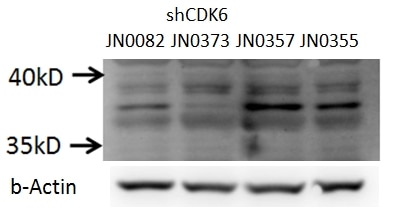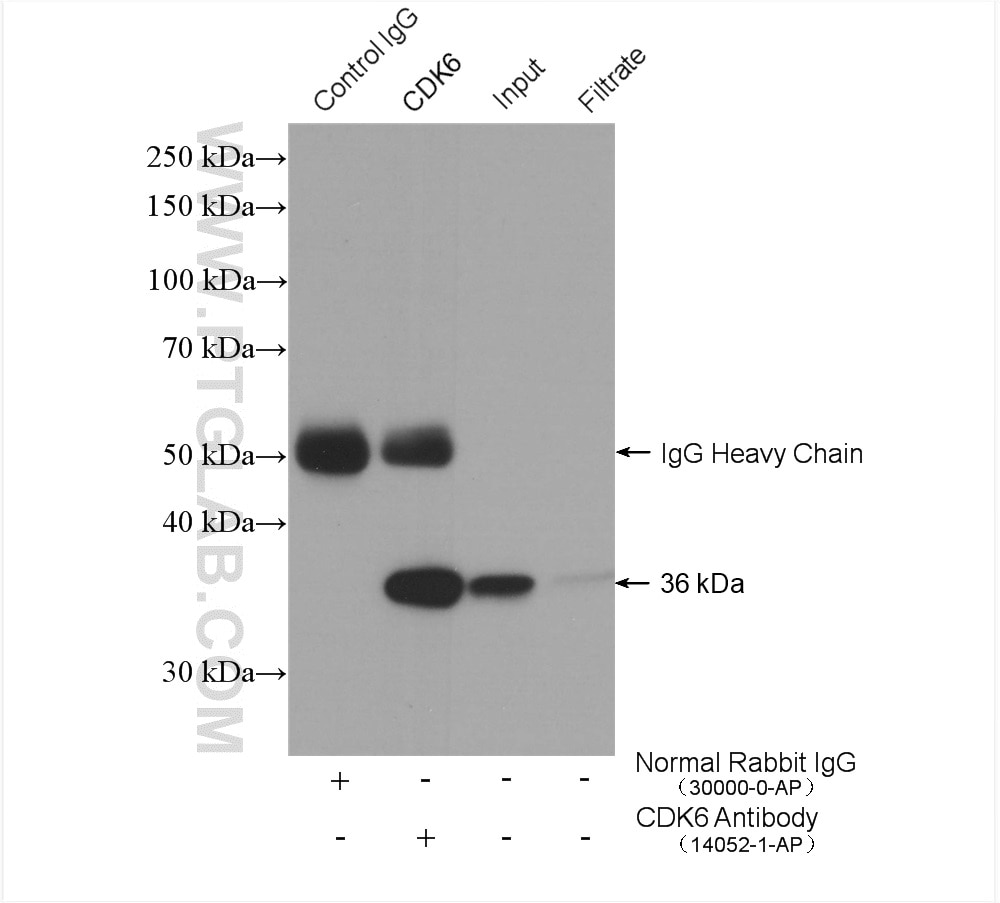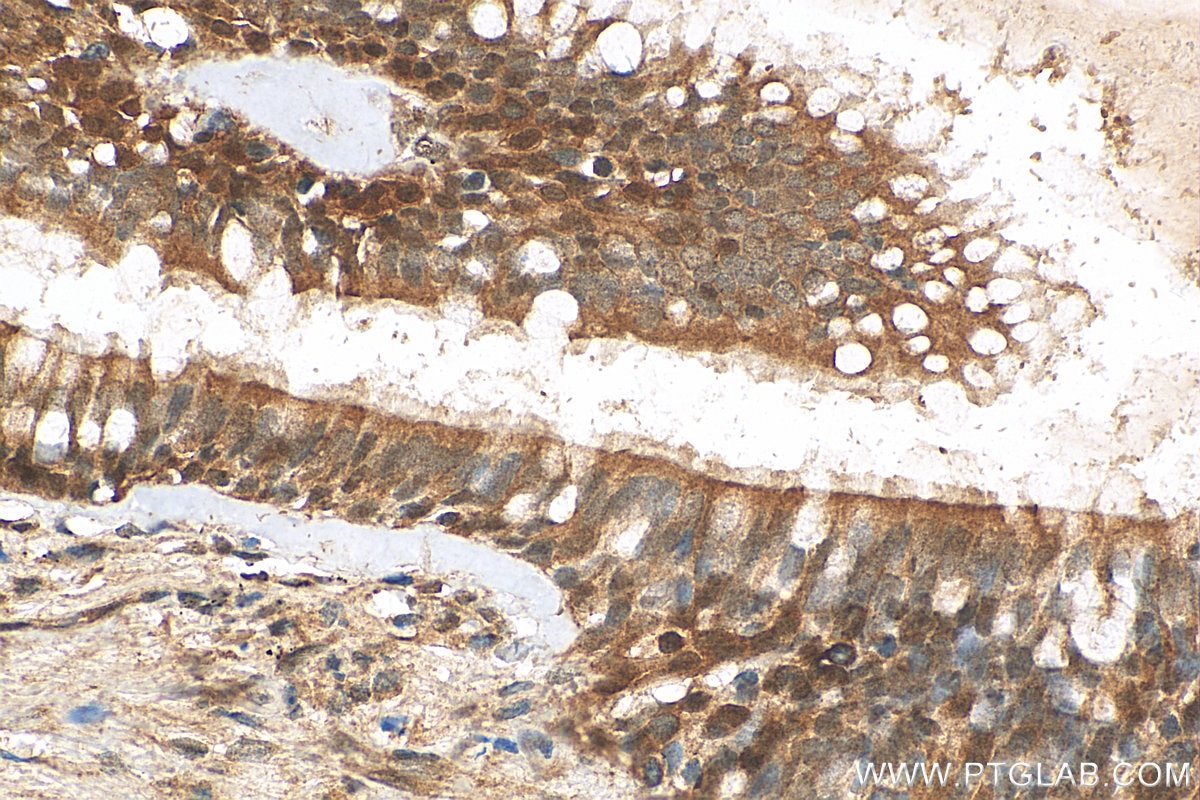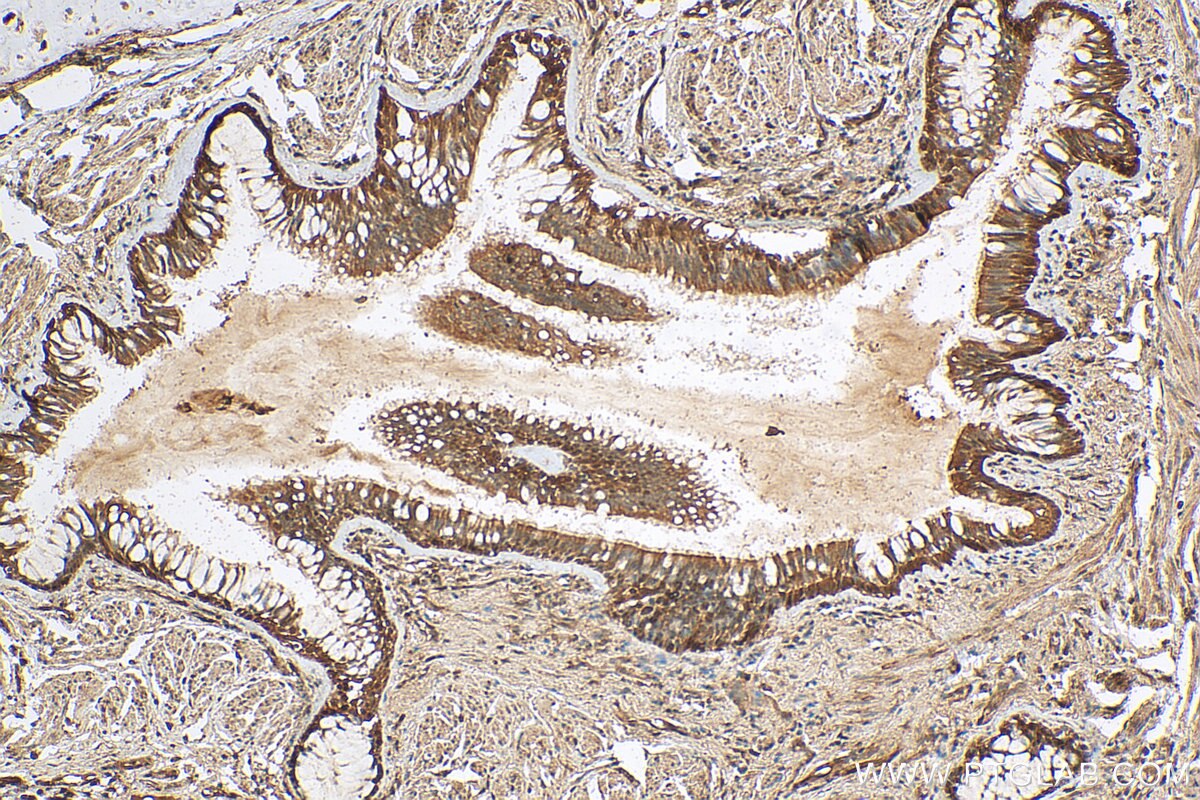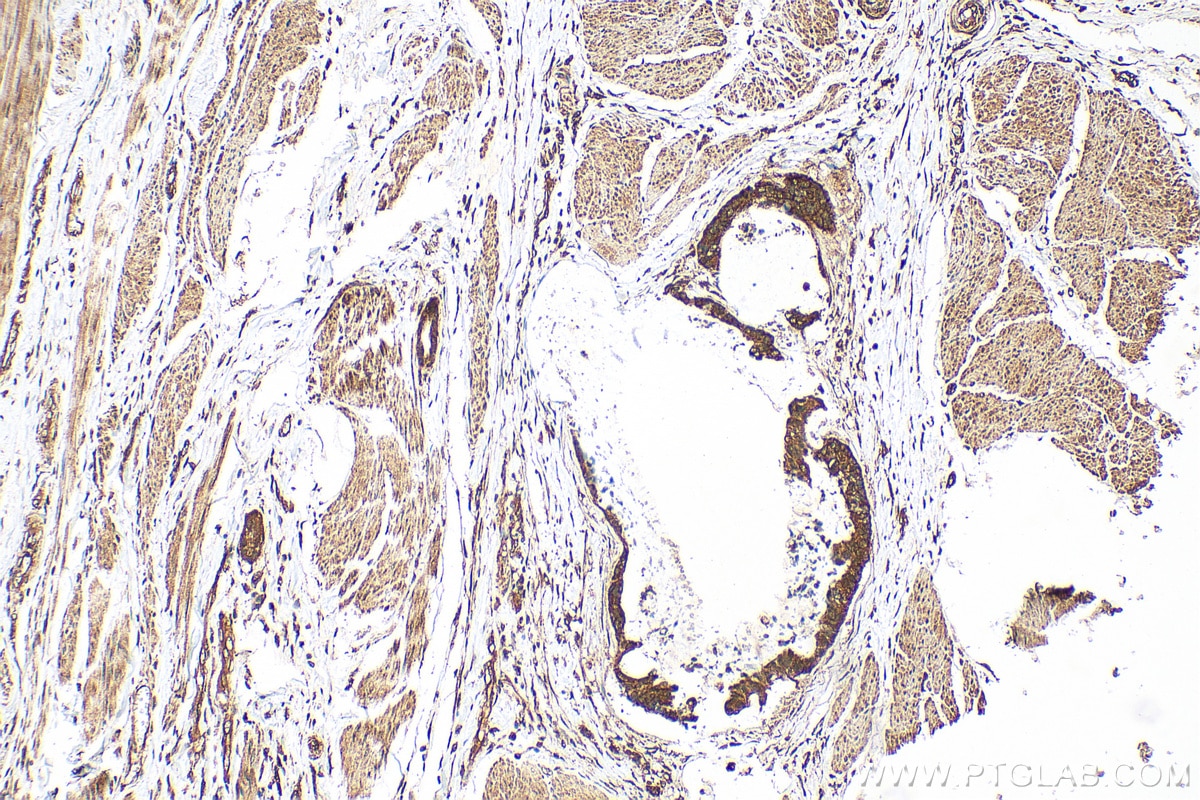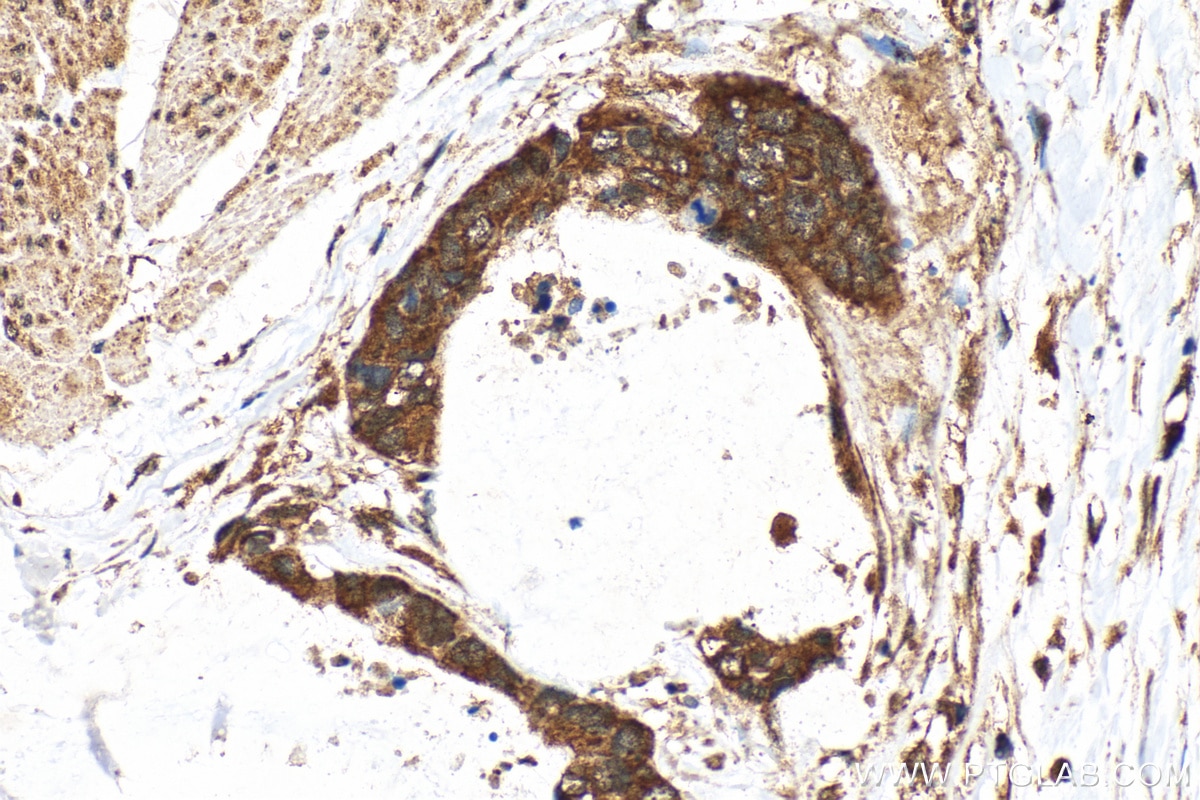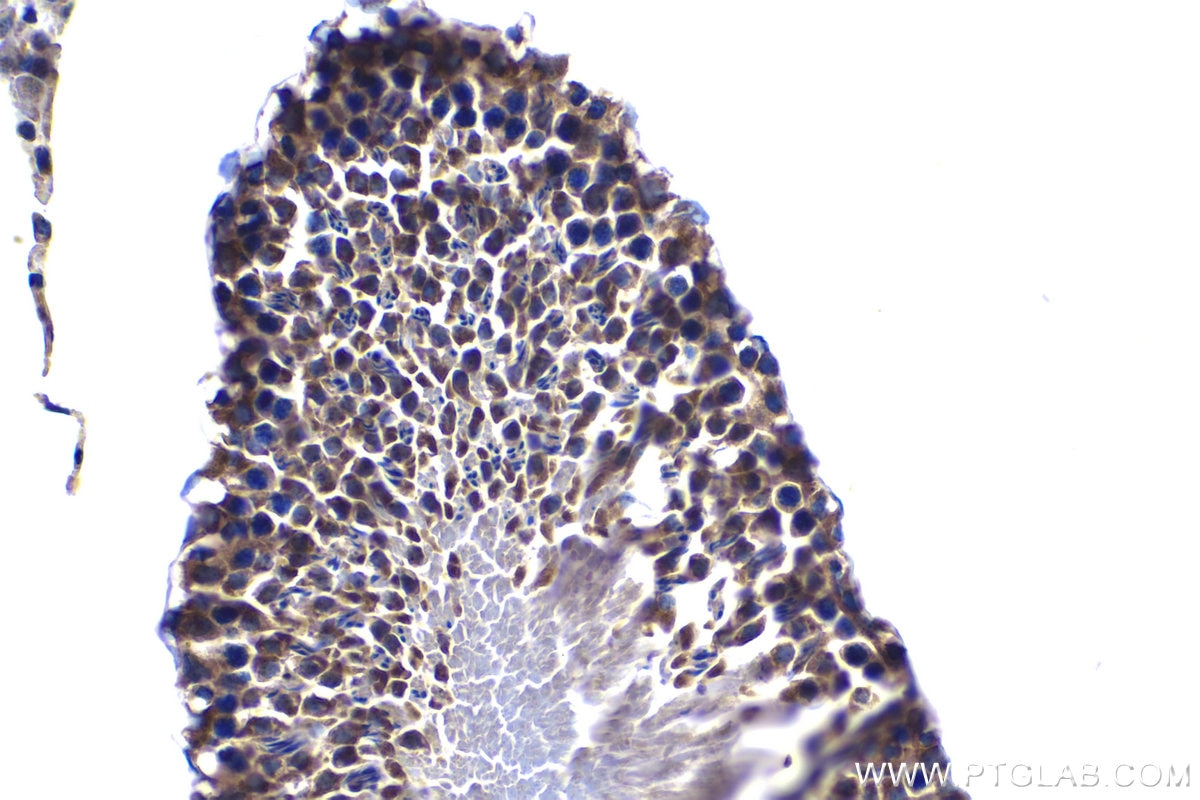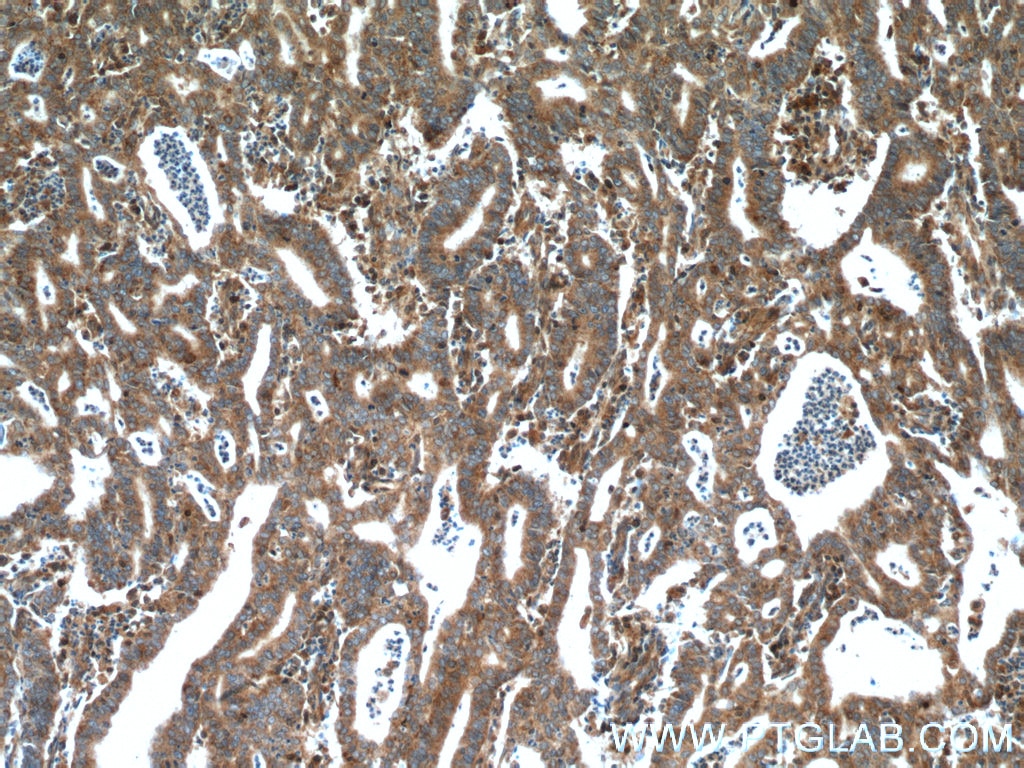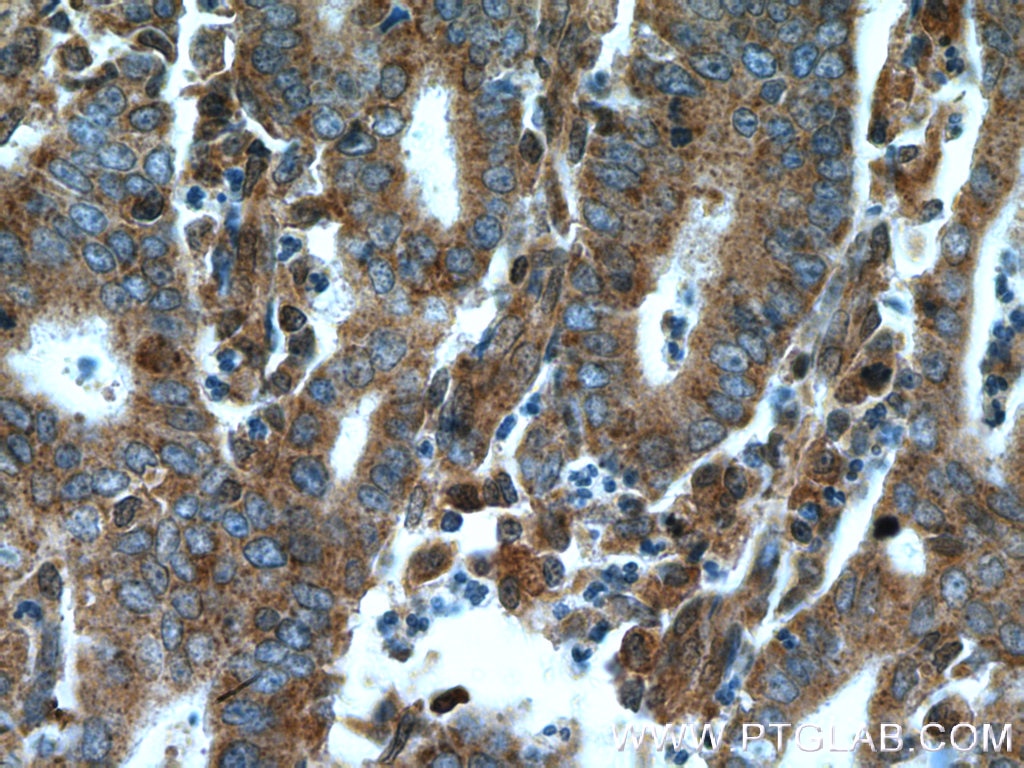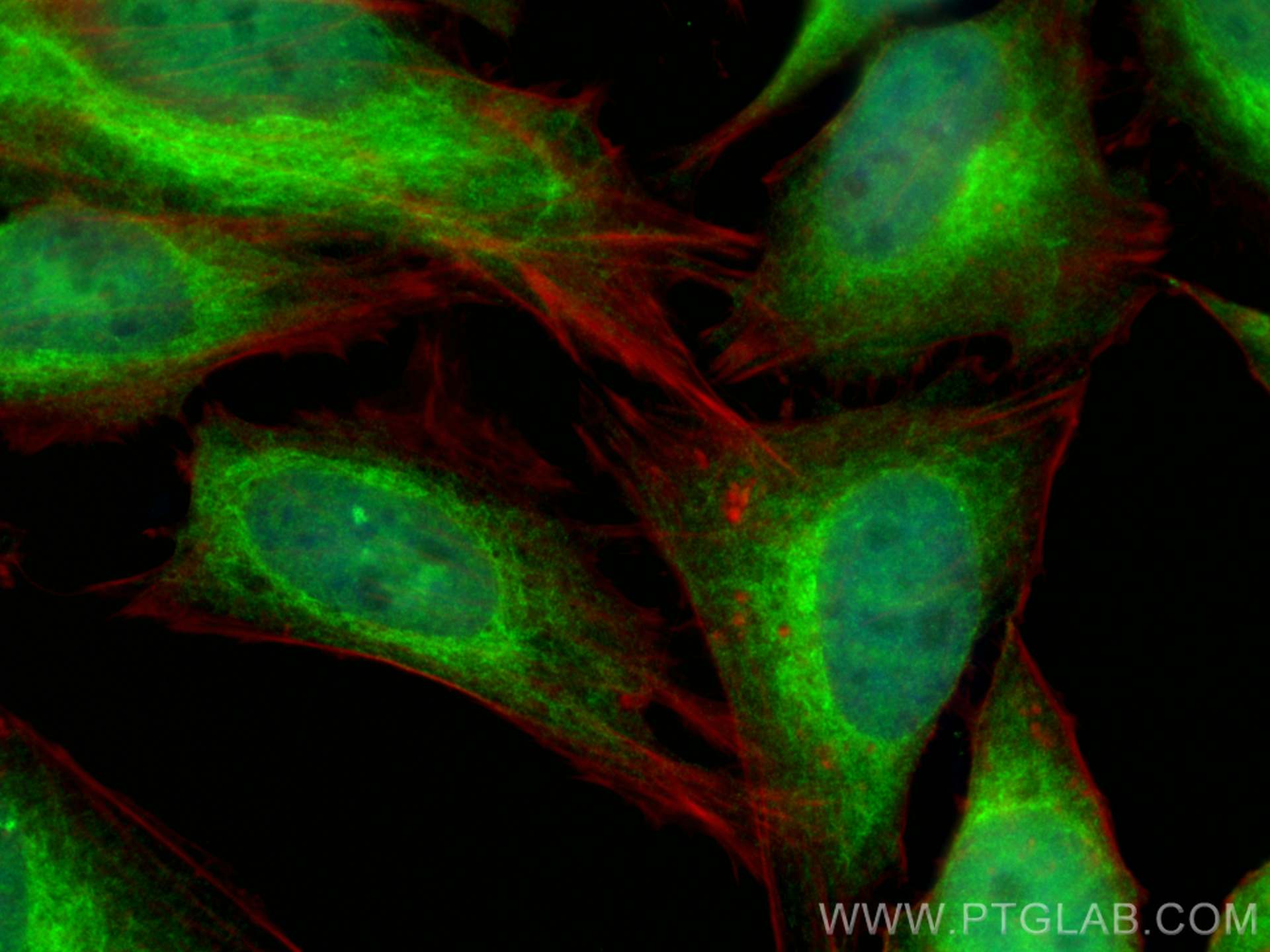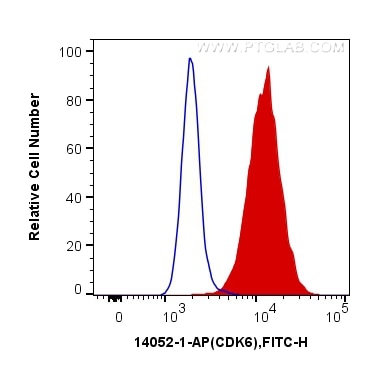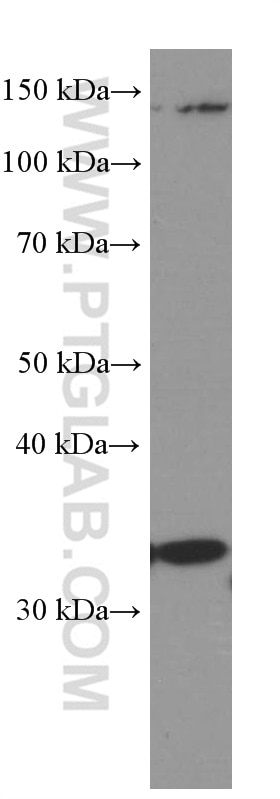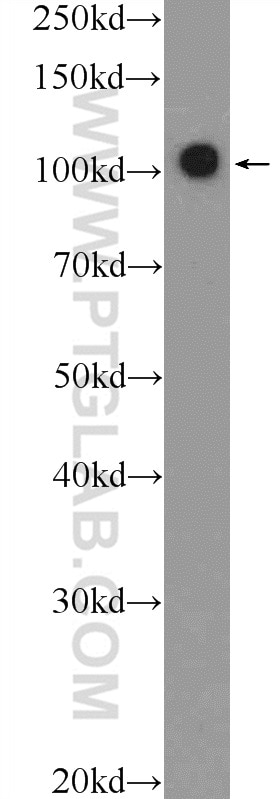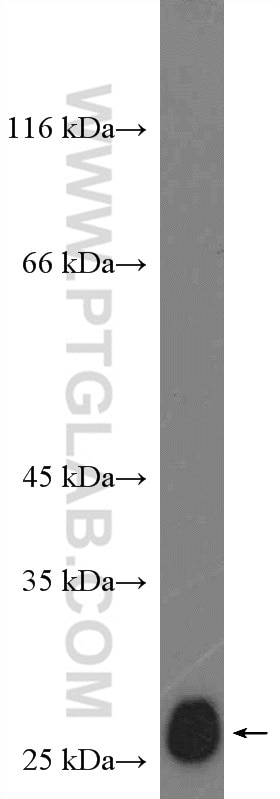- Phare
- Validé par KD/KO
Anticorps Polyclonal de lapin anti-CDK6
CDK6 Polyclonal Antibody for WB, IHC, IF/ICC, FC (Intra), IP, ELISA
Hôte / Isotype
Lapin / IgG
Réactivité testée
Humain, rat, souris et plus (3)
Applications
WB, IHC, IF/ICC, FC (Intra), IP, CoIP, ELISA
Conjugaison
Non conjugué
168
N° de cat : 14052-1-AP
Synonymes
Galerie de données de validation
Applications testées
| Résultats positifs en WB | cellules HEK-293, cellules C2C12, cellules HeLa, cellules Jurkat, cellules K-562, cellules MOLT-4, cellules NIH/3T3 |
| Résultats positifs en IP | cellules Jurkat, |
| Résultats positifs en IHC | tissu de cancer du poumon humain, tissu de cancer de l'endomètre humain, tissu de carcinome urothélial humain, tissu testiculaire de rat il est suggéré de démasquer l'antigène avec un tampon de TE buffer pH 9.0; (*) À défaut, 'le démasquage de l'antigène peut être 'effectué avec un tampon citrate pH 6,0. |
| Résultats positifs en IF/ICC | cellules HeLa, |
| Résultats positifs en FC (Intra) | cellules HeLa, |
Dilution recommandée
| Application | Dilution |
|---|---|
| Western Blot (WB) | WB : 1:1000-1:6000 |
| Immunoprécipitation (IP) | IP : 0.5-4.0 ug for 1.0-3.0 mg of total protein lysate |
| Immunohistochimie (IHC) | IHC : 1:50-1:500 |
| Immunofluorescence (IF)/ICC | IF/ICC : 1:200-1:800 |
| Flow Cytometry (FC) (INTRA) | FC (INTRA) : 0.40 ug per 10^6 cells in a 100 µl suspension |
| It is recommended that this reagent should be titrated in each testing system to obtain optimal results. | |
| Sample-dependent, check data in validation data gallery | |
Applications publiées
| KD/KO | See 3 publications below |
| WB | See 159 publications below |
| IHC | See 17 publications below |
| IF | See 1 publications below |
| IP | See 1 publications below |
| CoIP | See 2 publications below |
Informations sur le produit
14052-1-AP cible CDK6 dans les applications de WB, IHC, IF/ICC, FC (Intra), IP, CoIP, ELISA et montre une réactivité avec des échantillons Humain, rat, souris
| Réactivité | Humain, rat, souris |
| Réactivité citée | rat, Chèvre, Humain, Lapin, poisson-zèbre, souris |
| Hôte / Isotype | Lapin / IgG |
| Clonalité | Polyclonal |
| Type | Anticorps |
| Immunogène | CDK6 Protéine recombinante Ag5275 |
| Nom complet | cyclin-dependent kinase 6 |
| Masse moléculaire calculée | 326 aa, 36 kDa |
| Poids moléculaire observé | 36-40 kDa |
| Numéro d’acquisition GenBank | BC027989 |
| Symbole du gène | CDK6 |
| Identification du gène (NCBI) | 1021 |
| Conjugaison | Non conjugué |
| Forme | Liquide |
| Méthode de purification | Purification par affinité contre l'antigène |
| Tampon de stockage | PBS avec azoture de sodium à 0,02 % et glycérol à 50 % pH 7,3 |
| Conditions de stockage | Stocker à -20°C. Stable pendant un an après l'expédition. L'aliquotage n'est pas nécessaire pour le stockage à -20oC Les 20ul contiennent 0,1% de BSA. |
Informations générales
Cyclin-dependent kinase 6 (CDK6) is an enzyme belonging to the CDK family. CDK6 is a catalytic subunit of a
protein kinase complex that is essential for progression through the G1 phase of the cell cycle and G1/S transition,
thus activating cell proliferation. CDK6 partners with cyclins to phosphorylate the retinoblastoma (pRb) protein to
release its binding partner E2F; a transcription factor that drives gene expression necessary for DNA replication
(PMID: 8114739). CDK6 was long thought of as a redundant homolog of CDK4 as they perform similar roles in cell
cycle progression. But recently it has become apparent that CDK6 and CDK4 differ in tissue-specific functions,
where CDK6 plays a role in differentiation (PMID: 16410727) but also in contribution to tumor development.
What is the molecular weight of CDK6?
The molecular weight of CDK6 is approximately 36-40 kDa (PMID: 23563707, 8114739).
What is the subcellular localization of CDK6?
CDK6 is ubiquitously expressed through the nucleus and cytoplasm. However, the most active complexes are
located in the nuclei of proliferating cells.
What is the expression pattern of CDK6?
CDK6 activity first occurs midway through the G1 phase. Its expression is regulated by D-type cyclins and
members of the INK4 family of CDK inhibitors (PMID: 7739547).
What is CDK6's role in cancer?
CDK6 is involved in a critical regulatory point in the cell cycle and so is found to be unbalanced in approximately
80-90% of tumors (PMID: 23356980). Loss of cell cycle control is the initial step in the development of the
hallmarks of cancer, such as sustained proliferative signaling and dysregulated cellular energetics. Deregulation
of CDK6 has an important role in lymphoma by increasing angiogenesis (PMID: 23948297) and upregulated CDK6
expression is also associated with a poor clinical prognosis in medulloblastoma (PMID: 23172372).
Protocole
| Product Specific Protocols | |
|---|---|
| WB protocol for CDK6 antibody 14052-1-AP | Download protocol |
| IHC protocol for CDK6 antibody 14052-1-AP | Download protocol |
| IF protocol for CDK6 antibody 14052-1-AP | Download protocol |
| IP protocol for CDK6 antibody 14052-1-AP | Download protocol |
| Standard Protocols | |
|---|---|
| Click here to view our Standard Protocols |
Publications
| Species | Application | Title |
|---|---|---|
Cell Metab Microglial lipid droplet accumulation in tauopathy brain is regulated by neuronal AMPK | ||
Nat Commun The RNA-binding protein LRPPRC promotes resistance to CDK4/6 inhibition in lung cancer | ||
Genome Biol Single-cell transcriptomics reveals multiple chemoresistant properties in leukemic stem and progenitor cells in pediatric AML | ||
Nat Commun ICAM1 initiates CTC cluster formation and trans-endothelial migration in lung metastasis of breast cancer. | ||
Nat Commun Identification of predictors of drug sensitivity using patient-derived models of esophageal squamous cell carcinoma. |
